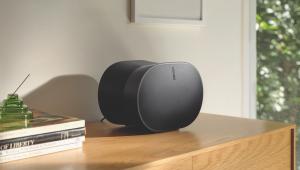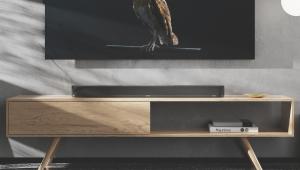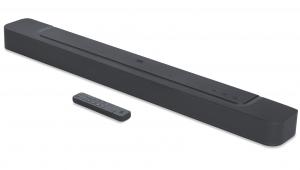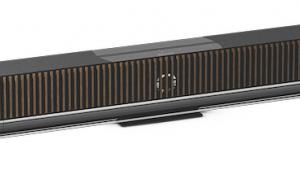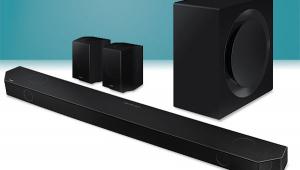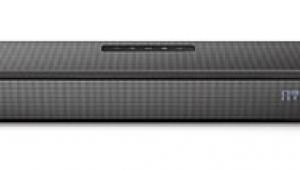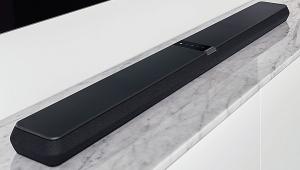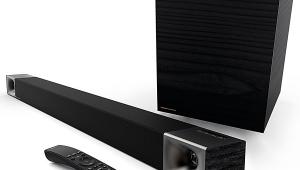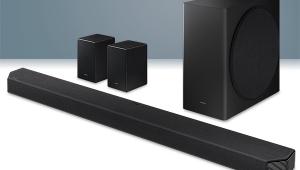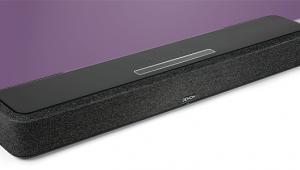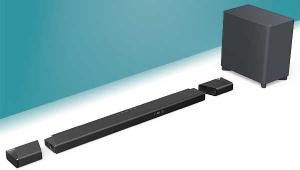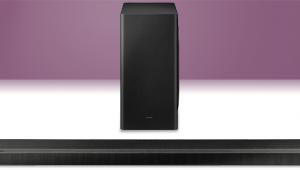Samsung HW-Q950T Dolby Atmos soundbar review
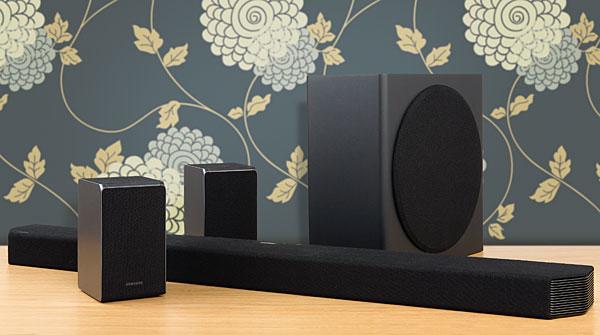
 John Archer samples the 9.1.4-channel theatrics of Samsung's flagship soundbar
John Archer samples the 9.1.4-channel theatrics of Samsung's flagship soundbar
While I love most things about Samsung's HW-Q950T soundbar, there is one thing about it that's so incredibly dumb I have to get it off my chest right away: its LED display is on its top edge.
This might sound a trivial way to start a review of a £1,400 soundbar, but trust me: only being able to see the reams of useful information the readout can share if you stand up from your sofa and lean over the soundbar's top is annoying.
Presumably the 'logic' behind putting the display there has something to do with Samsung placing an on/off button for the soundbar's built-in far-field mic (which supports Alexa voice control) on the Q950T's top edge. Or, perhaps, the soundbar's support for Tap Connect, where Samsung phones running Android 8.1 can be connected to the 'bar for Bluetooth music streaming just by tapping them against its bodywork.
Yet neither of these explanations for the display trump the overwhelming logic of being able to see from your seating position such key information as input, volume level, incoming sound format, and sound mode.
Couch potato rant over, let's move on to the many things the Samsung Q950T does right. Starting with most of the rest of its design.
Slimmed Down
This 'bar is slightly smaller than its HW-Q90R predecessor, with a 14mm reduction in height to slide comfortably under a wider range of TVs. Samsung has also shifted from a full plastic finish to a Kvadrat fabric cover on the Q950T's top and front sides. This is rather prone to collecting dust, but creates a more opulent feel.
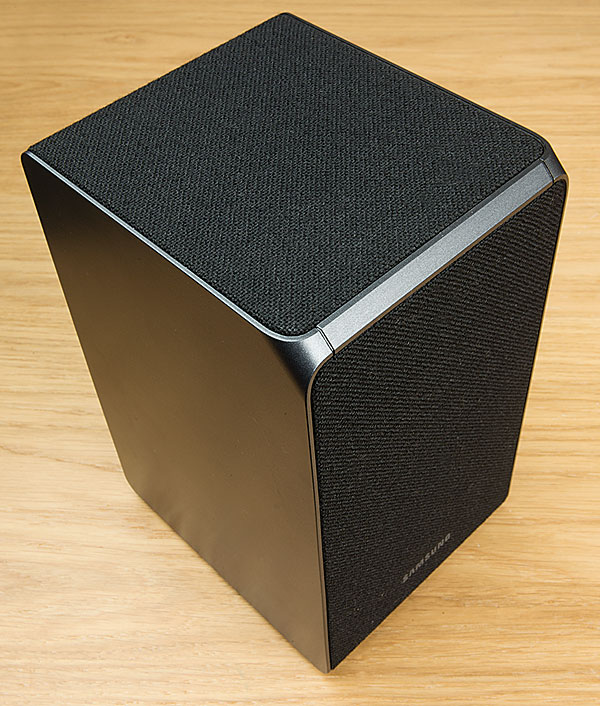
The best thing about the Q950T's design, of course, is that it manages to fit a potent combination of front LCR, surround left, surround right, rear left, rear right and two upfiring drivers into its relatively compact form. Samsung is a little reticent to talk driver technology, but we do know the 'bar uses full-range units for the height channels and packs 'wide-range' tweeters.
Couple this plethora of main soundbar channels with the wireless units that ship with the Q950T (a subwoofer with an 8in driver, and two rears that also each carry upfiring drivers) and you end up with a full channel count of 9.1.4, driven by a suggested 546W of grunt.
This naturally makes the Q950T well positioned for playing Dolby Atmos and DTS:X soundtracks. Both formats are supported, via either direct HDMI connection, or over eARC via eARC-capable TVs.
The soundbar's two HDMI inputs and one HDMI output handle 4K at 60Hz, HDR10, HDR10+, and Dolby Vision (the latter somewhat ironic given that Samsung's TVs don't). There's no support for the 4K/120 HDR streams provided by new consoles and PCs, but no other soundbar I can think of supports that either. For such sources, you'll have to connect them to a sufficiently capable TV and use eARC to pass the sound on to the 'bar. The only other connection is an optical digital audio port. There's no USB, nor Ethernet (use Wi-Fi instead).
While the Q950T is predominantly a movie machine (and over-engineered daytime TV audio booster) it also supports a wide range of music services (including Spotify, Amazon Music, and Apple Music) via Samsung's SmartThings app, as well as audio file formats, including hi-res FLAC, ALAC and AIFF options.
Raw Power
For the last five years, via its R&D 'Audio Lab' in California, Samsung has been crafting some of the best all-round soundbar solutions in town. The Q950T continues that theme. The mix of raw power, sound projection and dynamic range it achieves is truly explosive.
 |
Home Cinema Choice #351 is on sale now, featuring: Samsung S95D flagship OLED TV; Ascendo loudspeakers; Pioneer VSA-LX805 AV receiver; UST projector roundup; 2024’s summer movies; Conan 4K; and more
|



